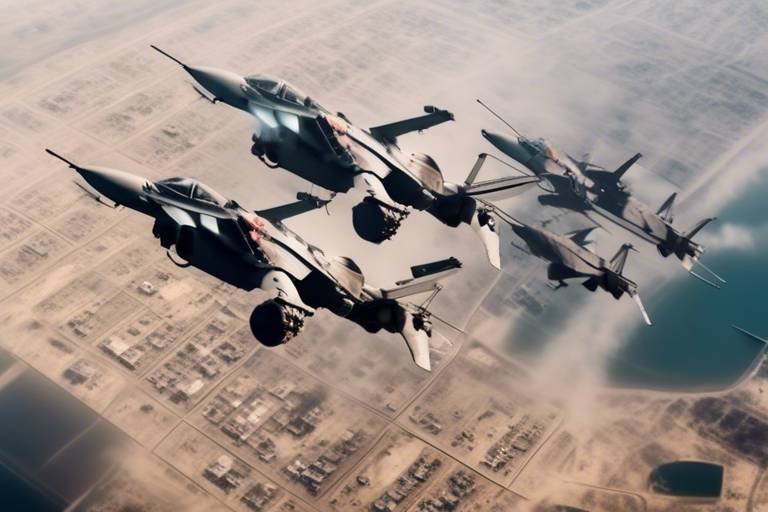The Future of Military Satellite Communication
The landscape of military operations is rapidly evolving, and at the heart of this transformation is military satellite communication. As modern warfare becomes increasingly complex, the need for reliable, high-speed communication systems has never been more critical. Imagine a battlefield where every unit, from ground troops to aerial drones, is interconnected in real-time, sharing vital information and executing coordinated strategies. This is not just a dream; it's the future that advancements in satellite technology are making possible.
Military satellite communication provides the backbone for command and control in defense strategies. With the ability to transmit vast amounts of data across great distances, satellites enable military forces to maintain situational awareness, coordinate operations, and respond swiftly to emerging threats. The advancements in technology are truly revolutionary, pushing the boundaries of what's achievable. Enhanced bandwidth and improved data transmission speeds are just the tip of the iceberg. These innovations allow for seamless communication even in the most challenging environments, ensuring that military personnel can stay connected and informed.
However, the road to achieving optimal military satellite communication is not without its bumps. Challenges abound, including budget constraints, technological limitations, and geopolitical factors that can hinder progress. As defense budgets are often stretched thin, funding for new satellite communication projects competes with other pressing military needs. This competition can slow down the pace of development and deployment, leaving military forces at a disadvantage when they need cutting-edge technology the most.
Moreover, current technologies may not fully address the evolving demands of military operations. The rapid pace of change in warfare means that ongoing research and development are essential to ensure that satellite systems remain relevant and effective. As we look to the future, it's crucial to understand the geopolitical landscape that shapes military satellite communication strategies. International collaboration among allied nations can enhance capabilities and foster interoperability, but it also comes with its own set of challenges.
As we navigate these complexities, the integration of artificial intelligence and the trend toward miniaturization of satellites promise to revolutionize military communication. Smaller, more efficient satellites can be deployed rapidly, providing enhanced capabilities that traditional systems cannot match. The incorporation of AI can optimize data processing, enabling military leaders to make informed decisions in real-time. This fusion of technology and strategy is what will define the future of military satellite communication.
- What are the primary benefits of military satellite communication? Military satellite communication enhances real-time data sharing, improves situational awareness, and facilitates coordinated operations across various military units.
- What challenges do military satellite communication systems face? Challenges include budget constraints, technological limitations, and geopolitical factors that can affect deployment and collaboration.
- How is AI impacting military satellite communication? AI is optimizing data processing and decision-making, allowing for quicker responses to threats and more efficient use of resources.
- Why is international collaboration important for military satellite communication? Collaboration enhances interoperability, allows for shared intelligence, and improves overall communication capabilities among allied forces.

Advancements in Technology
The landscape of military satellite communication is undergoing a revolutionary transformation, driven by a plethora of technological advancements. These innovations are not just enhancing the capabilities of military operations; they are reshaping the very fabric of how defense strategies are formulated and executed. Imagine a world where data flows seamlessly across vast distances, where soldiers on the ground can communicate with command centers in real-time, and where crucial information is transmitted almost instantaneously. This is not a distant future—it's happening now!
One of the most significant advancements in this field is the improvement in bandwidth and data transmission speeds. Modern military satellites are equipped with advanced technologies that allow for higher data rates, enabling more information to be sent and received without delays. For instance, the deployment of high-throughput satellites (HTS) has dramatically increased the amount of data that can be transmitted simultaneously. This is akin to upgrading from a narrow pipe to a wide highway, allowing for a smoother and faster flow of information.
Moreover, the reliability of satellite communication has seen a marked improvement. With the integration of redundant systems and advanced error-correction algorithms, military communications can now withstand various types of disruptions, whether they arise from natural phenomena or hostile actions. This reliability is crucial in combat situations where every second counts, and the loss of communication can have dire consequences.
Additionally, the advent of miniaturized satellites is another game-changer. These smaller satellites can be launched in swarms, providing enhanced coverage and flexibility. They are less expensive to produce and can be deployed more rapidly than traditional satellites, making them an attractive option for military planners. With this technology, the military can quickly adapt to changing operational needs, much like a chess player adjusting their strategy in response to an opponent's moves.
Artificial intelligence (AI) is also making waves in military satellite communication. By leveraging AI algorithms, military systems can analyze vast amounts of data to identify patterns and make predictions. This capability not only speeds up decision-making processes but also enhances situational awareness on the battlefield. Imagine having an assistant that can sift through mountains of data in seconds, highlighting only the most relevant information for commanders. This integration of AI is paving the way for a new era of military operations.
In conclusion, the advancements in military satellite communication are not just about technology; they represent a profound shift in how military operations are conducted. As these technologies continue to evolve, we can expect even greater enhancements in communication capabilities, ultimately leading to more effective and efficient defense strategies.
- What are high-throughput satellites (HTS)? HTS are advanced satellites designed to provide significantly higher bandwidth and data transmission rates compared to traditional satellites.
- How does artificial intelligence improve military communication? AI enhances military communication by processing large datasets quickly, identifying patterns, and aiding in decision-making processes.
- What is the significance of miniaturized satellites? Miniaturized satellites are less expensive, quicker to deploy, and provide enhanced flexibility and coverage for military operations.
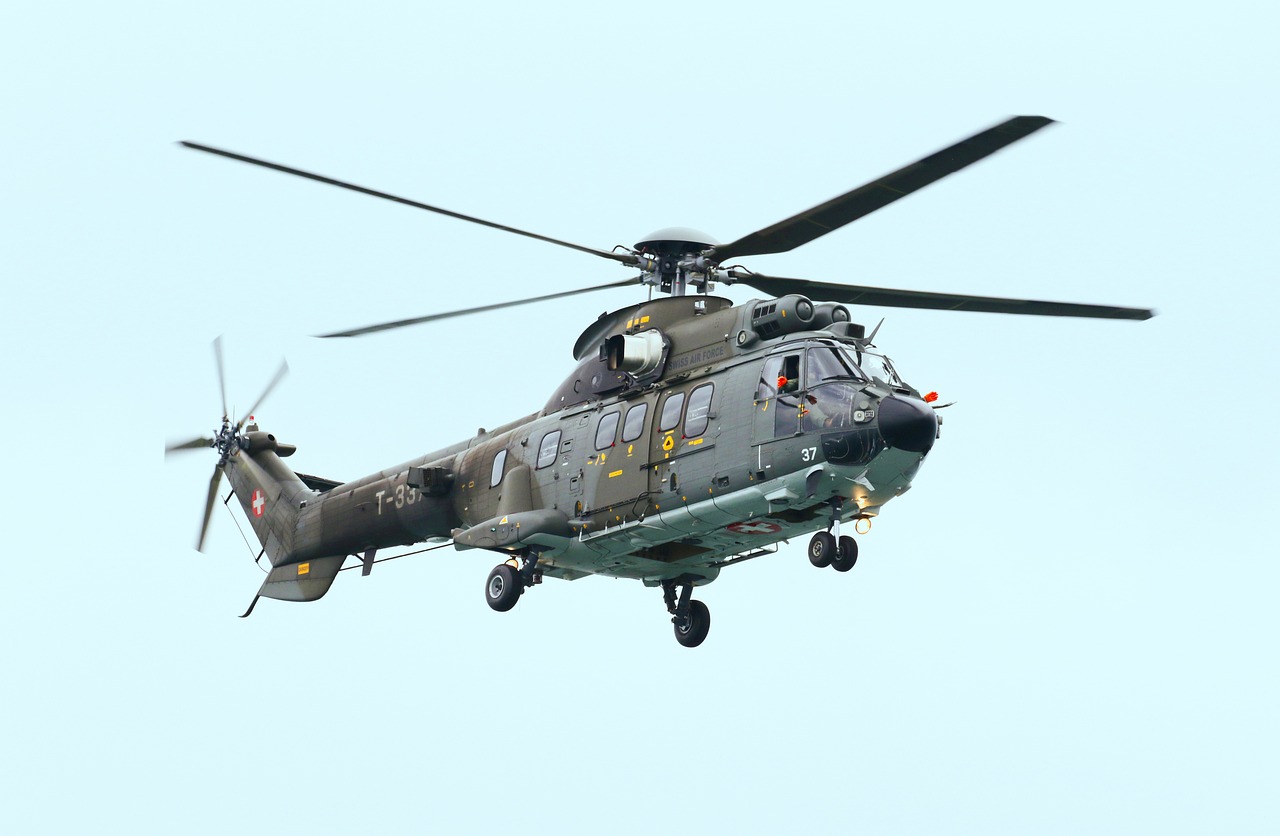
Challenges in Implementation
The integration of advanced military satellite communication systems is not without its hurdles. Despite the remarkable strides in technology, several challenges loom large, threatening to impede the progress of these vital systems. For one, budget constraints often emerge as a significant obstacle. Military funding is a finite resource, and satellite communication projects frequently find themselves in competition with other pressing defense priorities. This competition can slow the pace of development and deployment, causing delays that could affect national security. Imagine trying to build a high-tech fortress while constantly having to divert funds to repair the moat—it simply doesn’t work efficiently.
Moreover, the technological limitations of current systems cannot be ignored. As military operations evolve, the demands placed on communication systems grow more complex. Current satellite technologies may not be able to keep pace with these evolving needs, necessitating ongoing research and development. This is akin to trying to run a marathon in outdated sneakers; without upgrading your gear, you're bound to fall behind. The military must continuously innovate to ensure that its satellite systems can handle the increasing data loads and provide reliable communication in diverse operational environments.
Another layer of complexity is added by geopolitical factors. The global landscape is constantly shifting, and tensions between nations can significantly influence military satellite communication strategies. For instance, partnerships that once seemed solid can quickly become strained, affecting technology sharing and operational capabilities. In this context, the ability to collaborate internationally becomes crucial. A strong alliance can enhance satellite communication capabilities, enabling shared intelligence and interoperability among allied forces. However, when geopolitical tensions rise, these partnerships can become fragile, leaving military operations vulnerable.
To further illustrate the challenges faced, consider the following table that outlines key issues impacting military satellite communication:
| Challenge | Description |
|---|---|
| Budget Constraints | Limited funding often diverts resources from satellite projects to other defense needs. |
| Technological Limitations | Current technologies may not meet the evolving demands of military operations. |
| Geopolitical Factors | International tensions can affect partnerships and technology sharing. |
In conclusion, while the future of military satellite communication holds great promise, the challenges in implementation are significant. Budget constraints, technological limitations, and geopolitical factors all play a role in shaping the landscape of military communications. Addressing these challenges is crucial for ensuring that military forces can operate effectively in an increasingly complex world.
- What are the main challenges faced in military satellite communication?
The main challenges include budget constraints, technological limitations, and geopolitical factors that can affect international partnerships and operational capabilities.
- How do budget constraints impact military satellite projects?
Budget constraints often lead to competition for funding, which can slow down the pace of development and deployment of satellite communication systems.
- Why are technological limitations a concern for military operations?
As military operations become more complex, existing satellite technologies may not be able to meet the increasing demands for data transmission and reliability.
- How do geopolitical factors influence military satellite communication?
Geopolitical tensions can strain international partnerships, affecting technology sharing and interoperability among allied forces.

Budget Constraints
When it comes to military satellite communication, one of the most significant hurdles is the that defense departments face. With limited financial resources, military planners often find themselves in a tug-of-war, trying to balance the urgent need for advanced communication technologies against numerous other priorities. It's like trying to fill a glass with water while someone keeps pouring more sand into it; the more you pour in, the harder it becomes to find room for what you really need.
Funding for satellite communication projects often faces fierce competition. Defense budgets are typically spread across various sectors, including personnel, equipment, and operational costs. This competition can slow down the pace of development and deployment, leaving military forces at a disadvantage. Imagine needing a new weapon system, enhanced training programs, and advanced satellite technology all at once; something's got to give, and unfortunately, it often ends up being the very technology that could provide a crucial edge in modern warfare.
To navigate these budgetary challenges, military planners must conduct a thorough cost-benefit analysis. This evaluation is essential for justifying investments in new technologies. They need to ask themselves: What are the tangible benefits of upgrading our satellite communication systems? Will the advancements translate into improved operational effectiveness on the battlefield? Such questions are critical, as they help to illuminate the true value of these systems.
Moreover, understanding potential funding sources is crucial for overcoming budgetary limitations. These sources can range from government grants to private partnerships. By leveraging these opportunities, military organizations can secure additional funding to bolster their satellite communication capabilities. For example, collaborations with tech companies that specialize in satellite technology can provide not only financial backing but also innovative solutions that might not be available in-house.
In conclusion, while budget constraints present a formidable challenge to military satellite communication, they also offer an opportunity for strategic planning and innovation. By prioritizing funding, conducting thorough analyses, and exploring diverse funding options, military leaders can work towards overcoming these constraints, ensuring that their forces remain equipped with the cutting-edge technology necessary for success in modern warfare.
- What are the main challenges in military satellite communication?
The primary challenges include budget constraints, technological limitations, and geopolitical factors that can hinder the development and deployment of satellite systems.
- How do budget constraints affect military technology?
Budget constraints can slow down the development of new technologies as funding must be allocated across various defense priorities, impacting the pace of innovation.
- What is a cost-benefit analysis in military planning?
A cost-benefit analysis evaluates the financial implications versus the potential advantages of investing in new technologies, helping military planners make informed decisions.
- What funding sources are available for military projects?
Potential funding sources include government grants, private partnerships, and collaborations with technology companies that can provide both financial and technical support.
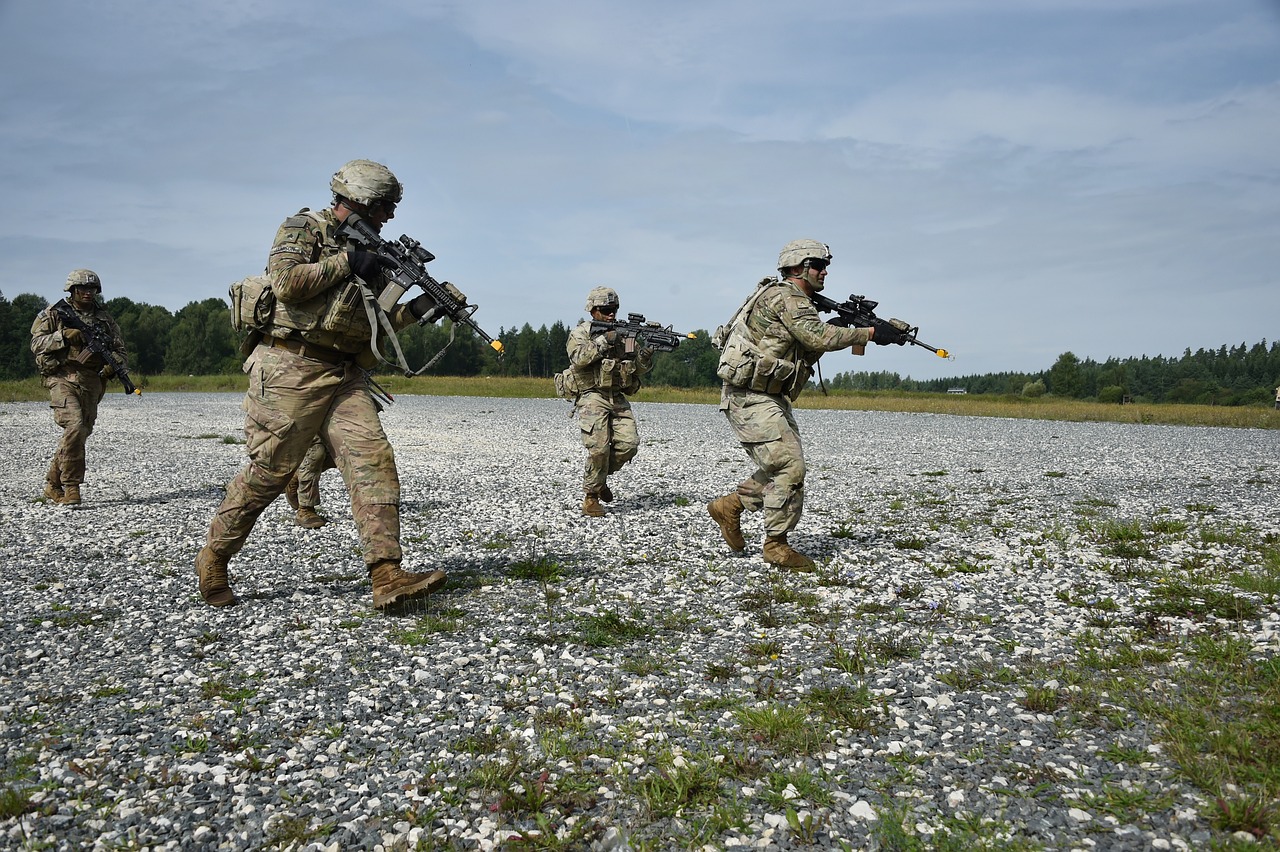
Cost-Benefit Analysis
When it comes to investing in military satellite communication systems, a thorough is crucial. Military planners must weigh the potential benefits against the costs to ensure that resources are allocated effectively. This analysis isn't just about crunching numbers; it’s about understanding how these systems can enhance operational capabilities, improve mission success rates, and ultimately save lives. The evaluation process typically involves several key factors:
- Operational Efficiency: Improved communication systems can lead to faster decision-making and more coordinated efforts during military operations.
- Strategic Advantage: Enhanced satellite communication can provide a tactical edge over adversaries by facilitating real-time intelligence sharing.
- Long-Term Savings: Although the initial investment may be significant, advanced systems can reduce long-term operational costs through increased reliability and efficiency.
However, it's essential to recognize that this analysis comes with its own set of challenges. For instance, estimating the return on investment (ROI) for advanced technologies can be complex. Factors like changing geopolitical landscapes and evolving military needs can affect the anticipated benefits. Additionally, the rapid pace of technological advancement means that what seems like a cutting-edge solution today could be outdated tomorrow, complicating long-term planning.
To effectively conduct a cost-benefit analysis, military planners often rely on various methodologies. One common approach is to create a cost-effectiveness analysis (CEA), which compares the relative costs and outcomes of different communication systems. This method allows for a clearer picture of how different options stack up against each other, ensuring that decision-makers can choose the most effective solution for their needs.
Furthermore, collaboration with industry experts and technology providers can provide valuable insights into potential costs and benefits. By engaging in partnerships, military organizations can gain access to the latest innovations and best practices in satellite communication, which can enhance the overall effectiveness of their operations.
Ultimately, the goal of a comprehensive cost-benefit analysis is to ensure that military satellite communication systems not only meet current demands but are also adaptable to future challenges. This foresight is essential in an era where technological advancements and geopolitical dynamics are constantly shifting.
- What is a cost-benefit analysis? A cost-benefit analysis is a systematic approach to estimating the strengths and weaknesses of alternatives in order to determine the best option in terms of benefits versus costs.
- Why is cost-benefit analysis important in military satellite communication? It helps military planners justify investments by clearly outlining the potential operational benefits relative to the costs involved.
- What factors are considered in a cost-benefit analysis? Factors include operational efficiency, strategic advantage, long-term savings, and potential ROI.
- How can military organizations improve their cost-benefit analysis? By collaborating with industry experts and utilizing advanced methodologies like cost-effectiveness analysis.
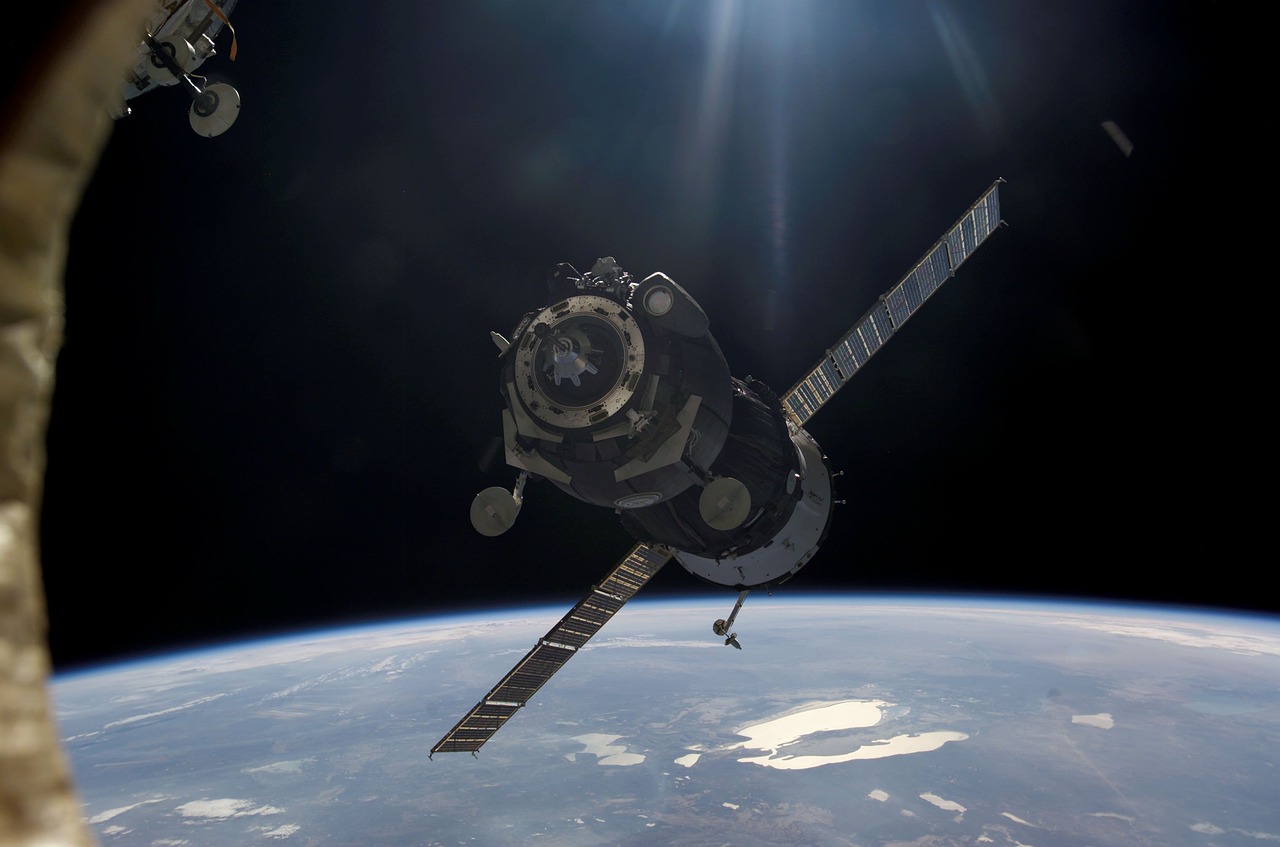
Funding Sources
When it comes to financing military satellite communication projects, understanding the various available is crucial. The stakes are high, and the need for advanced communication systems has never been more pressing. Military planners and decision-makers often find themselves navigating a complex landscape of funding options, each with its own set of challenges and opportunities.
One of the primary sources of funding for these projects is government budgets. Defense budgets are allocated annually, and within these budgets, specific funds are earmarked for satellite communication initiatives. However, competition for these funds can be fierce, as other defense priorities—such as personnel costs, equipment purchases, and research and development—vie for attention. This competition can lead to delays in funding approval and, ultimately, project timelines.
Another significant source of funding comes from government grants. These grants can be pivotal in kickstarting innovative satellite communication projects. Various government agencies, such as the Department of Defense (DoD) and the National Aeronautics and Space Administration (NASA), often provide grants for research and development in satellite technologies. However, securing these grants typically requires a comprehensive proposal that demonstrates the project's potential impact on national security and military operations.
In addition to government funding, private partnerships are becoming increasingly important. Collaborations between military organizations and private companies can unlock new resources and expertise. These partnerships can take various forms, including joint ventures, research collaborations, and public-private partnerships. By leveraging the strengths of both sectors, military forces can accelerate the development of cutting-edge satellite communication systems.
Moreover, international collaborations are also a vital funding source. Countries that share common defense interests often pool their resources to develop and maintain satellite communication systems. For instance, NATO countries frequently collaborate on technology-sharing initiatives, which can help distribute costs and enhance capabilities across the alliance. Such collaborations not only provide financial benefits but also foster interoperability among allied nations.
It's also worth noting that crowdfunding has emerged as a potential source of funding for smaller-scale military technology projects. While unconventional, this approach allows individuals and smaller organizations to contribute to innovative satellite communication initiatives. Although still in its infancy, crowdfunding can serve as a supplementary funding mechanism, especially for niche technologies that may not attract traditional funding sources.
In summary, the landscape of funding sources for military satellite communication is multifaceted. From government budgets and grants to private partnerships and international collaborations, each source presents unique advantages and challenges. Understanding this funding ecosystem is essential for military planners aiming to enhance their communications capabilities in an increasingly complex global environment.
- What are the main sources of funding for military satellite communication projects?
The main sources include government budgets, grants from defense agencies, private partnerships, international collaborations, and even crowdfunding. - How does competition for funding affect military satellite projects?
Competition can delay funding approvals and impact project timelines, as various defense priorities vie for limited resources. - Why are private partnerships important for military satellite communication?
They provide additional resources and expertise, enabling faster development and innovation in satellite technologies. - Can crowdfunding be used for military technology projects?
Yes, while unconventional, crowdfunding can serve as a supplementary funding mechanism for niche technologies in satellite communications.
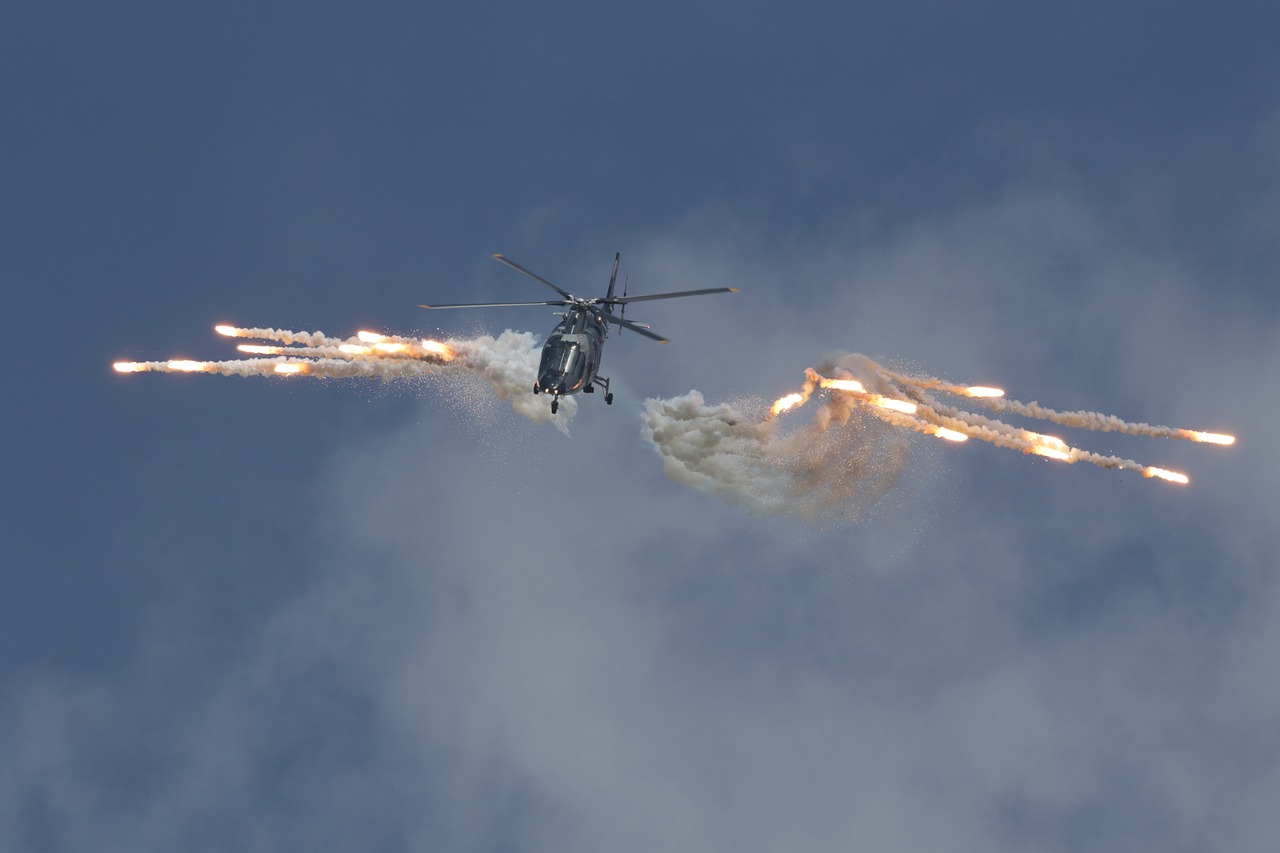
Technological Limitations
In the fast-paced world of military operations, the reliance on satellite communication is more pronounced than ever. However, despite significant advancements, there are still considerable that hinder the effectiveness of these systems. One of the primary challenges is the bandwidth capacity of current satellite systems. As military operations become more data-intensive, the existing bandwidth often falls short, leading to potential bottlenecks during critical missions. Imagine trying to stream a high-definition movie on a slow internet connection; the experience is frustrating and can lead to interruptions at the worst possible moments. This analogy holds true for military communications, where delays can have dire consequences.
Furthermore, the latency in satellite communications can be a significant drawback. While satellites in geostationary orbit provide extensive coverage, they also introduce latency due to the distance signals must travel. This delay can be detrimental in combat scenarios, where every second counts. For instance, if a soldier on the ground needs immediate intelligence from a satellite, any delay could compromise their safety and mission success. In contrast, terrestrial communication systems often provide much faster response times, creating a gap that military planners must address.
Another critical limitation is the vulnerability of satellite systems to environmental factors. Satellites are exposed to harsh conditions in space, including radiation and debris, which can affect their functionality. Additionally, weather conditions on Earth, such as heavy rain or storms, can disrupt signals and lead to communication failures. Just like how a storm can disrupt your Wi-Fi at home, military operations can experience similar challenges, making reliable communication a constant concern.
The integration of new technologies poses its own set of challenges. As military forces seek to incorporate advanced technologies such as artificial intelligence and machine learning into satellite systems, the complexity of these integrations can lead to unforeseen issues. For example, while AI can enhance data processing capabilities, it also requires robust infrastructure and continuous updates to remain effective. The military must invest in ongoing research and development to ensure that these technologies can be seamlessly integrated into existing systems.
To summarize, the technological limitations facing military satellite communication are multifaceted and require a strategic approach to overcome. Addressing issues such as bandwidth capacity, latency, environmental vulnerability, and technology integration will be crucial for enhancing the effectiveness of military operations. As we move forward, the military must prioritize research and development to ensure that satellite communication systems can meet the evolving demands of modern warfare.
- What are the main challenges in military satellite communication?
The main challenges include bandwidth limitations, latency issues, vulnerability to environmental factors, and difficulties in integrating new technologies. - How does latency affect military operations?
Latency can delay communication between ground troops and command centers, potentially compromising mission success and soldier safety. - What is the role of artificial intelligence in satellite communication?
AI can optimize data processing and enhance decision-making capabilities in real-time scenarios, but it requires robust infrastructure and continuous updates. - Are military satellites vulnerable to cyber attacks?
Yes, military satellites are at risk of cyber attacks, highlighting the need for strong cybersecurity measures to protect sensitive communications.

Geopolitical Factors
In the intricate web of modern warfare, play a crucial role in shaping the strategies surrounding military satellite communication. As nations vie for power and influence, the dynamics of international relations can significantly affect how military forces communicate and coordinate their operations. The reality is that every satellite launched into orbit carries not only technological advancements but also the weight of diplomatic negotiations and strategic alliances.
One of the most pressing issues is the impact of geopolitical tensions on military satellite communication strategies. For instance, countries that find themselves at odds may be less inclined to share satellite technologies or intelligence, which can lead to significant gaps in operational capabilities. This situation creates a complex environment where military planners must navigate not just technological challenges but also the intricacies of international diplomacy.
Moreover, the need for international collaboration has never been more critical. Allied nations can enhance their satellite communication capabilities through joint efforts, fostering interoperability and shared intelligence. This collaboration can manifest in various forms, such as:
- Joint satellite programs that pool resources and expertise.
- Shared data networks that allow for real-time information exchange.
- Training exercises that improve coordination in satellite operations.
However, the geopolitical landscape is not static. Emerging threats, such as cyber warfare, have added a new layer of complexity to military satellite communication. The increasing threat of cyber attacks on satellite systems underscores the urgent need for robust security measures to protect sensitive military communications. Countries must now prioritize cybersecurity alongside traditional military strategies, ensuring that their communication channels remain secure against potential adversaries.
In summary, the interplay of geopolitical factors is a double-edged sword in the realm of military satellite communication. While collaboration among allied nations can enhance capabilities, geopolitical tensions can hinder progress and create vulnerabilities. As military planners look to the future, understanding these dynamics will be essential for developing effective communication strategies that can withstand the tests of diplomacy and conflict.
- How do geopolitical tensions affect military satellite communication? Geopolitical tensions can hinder technology sharing and create operational gaps, affecting military readiness and coordination.
- What role does international collaboration play in military satellite communication? Collaboration among allied nations enhances interoperability and intelligence sharing, improving overall military effectiveness.
- Why is cybersecurity important for military satellite systems? Cybersecurity is crucial to protect sensitive communications from potential cyber attacks that could compromise military operations.

International Collaboration
In today's interconnected world, is not just a luxury; it's a necessity, especially when it comes to military satellite communication. The complexity of modern warfare and the need for real-time intelligence sharing among allied nations have made it imperative to work together. Imagine a chess game where each piece represents a different country, and the moves made by one piece can significantly impact the entire board. In this scenario, collaboration among allies enhances the collective capability to respond to threats and manage operations efficiently.
One of the most significant advantages of international collaboration in military satellite communication is the pooling of resources. Countries can share the financial burden of developing advanced satellite systems, which often require substantial investment. This cooperation can lead to the creation of joint satellite programs that leverage the strengths of each participating nation. For instance, countries like the United States, Canada, and several European nations have engaged in collaborative projects that enhance their satellite communication capabilities while ensuring interoperability.
Moreover, working together allows for the exchange of expertise and technology. Each nation brings unique skills and knowledge to the table. By sharing technological advancements, countries can accelerate the development of cutting-edge satellite systems. This collaboration can also foster innovation, as diverse perspectives often lead to creative solutions to complex problems. For example, a partnership between military and civilian sectors can yield breakthroughs that benefit both realms.
However, international collaboration is not without its challenges. Geopolitical tensions can complicate partnerships, leading to hesitance in sharing sensitive technology or intelligence. Trust plays a crucial role in these collaborations, and building that trust takes time and effort. To mitigate these challenges, nations often establish formal agreements that outline the terms of collaboration and ensure the protection of sensitive information. These agreements can include:
- Joint training exercises to improve interoperability
- Shared intelligence platforms for seamless communication
- Regular meetings to address concerns and enhance cooperation
Ultimately, the future of military satellite communication will depend heavily on the ability of nations to collaborate effectively. As threats become more sophisticated and the battlefield evolves, the need for a unified approach to satellite communication will be paramount. By fostering international cooperation, countries can ensure that they are not only prepared for current challenges but also equipped to face the uncertainties of future conflicts.
- Why is international collaboration important in military satellite communication?
International collaboration enhances resource sharing, accelerates technological advancements, and improves operational interoperability among allied nations. - What are the main challenges of international collaboration?
Geopolitical tensions, trust issues, and the protection of sensitive information can complicate partnerships in military satellite communication. - How can countries ensure effective collaboration?
Establishing formal agreements, conducting joint training exercises, and maintaining open communication can help foster trust and cooperation among nations.

Cybersecurity Concerns
In the realm of military satellite communication, have emerged as a formidable challenge. As our dependence on satellite technology increases, so does the potential vulnerability to malicious cyber attacks. Imagine a scenario where an enemy disrupts communication lines or intercepts classified data; the consequences could be catastrophic. The integrity and security of military communications must be prioritized, as any breach could jeopardize national security.
One of the primary issues is the complexity of satellite networks. These systems consist of numerous components, including ground stations, satellite links, and user terminals, all of which need to be fortified against cyber threats. As technology advances, so do the tactics employed by cyber adversaries. For instance, the rise of sophisticated hacking techniques means that traditional security measures may no longer suffice. Military organizations must adopt a proactive stance, continuously updating their defenses to stay ahead of potential threats.
Moreover, the integration of Internet of Things (IoT) devices into military satellite systems presents additional vulnerabilities. These devices can serve as entry points for cybercriminals, allowing them to launch attacks on the entire network. It’s akin to leaving a backdoor open in a fortified castle—inviting unwanted guests right into the heart of operations. Therefore, implementing stringent security protocols is essential to safeguard sensitive information.
To combat these cybersecurity threats, military planners are increasingly focusing on multi-layered security strategies. This approach includes:
- Encryption: Ensuring that all data transmitted via satellite is encrypted to protect it from interception.
- Regular Security Audits: Conducting frequent assessments of the satellite communication systems to identify and rectify vulnerabilities.
- Incident Response Plans: Developing comprehensive strategies to respond swiftly to any cyber incidents that may arise.
Furthermore, international collaboration plays a vital role in enhancing cybersecurity. By sharing intelligence and best practices among allied nations, military organizations can create a more robust defense against cyber threats. Think of it as a global alliance where nations come together to fortify their digital borders, ensuring that they are not standing alone against a common enemy.
In conclusion, as military satellite communication continues to evolve, addressing cybersecurity concerns must be at the forefront of strategic planning. The potential risks associated with cyber attacks are too significant to ignore, and proactive measures are essential to protect sensitive military operations. By investing in advanced security technologies and fostering international cooperation, we can build a resilient framework capable of withstanding the challenges of the digital age.
- What are the main cybersecurity threats to military satellite communication? Cyber threats include hacking, data interception, and malware attacks that can compromise communication integrity.
- How can military organizations enhance their cybersecurity measures? Implementing encryption, conducting regular security audits, and developing incident response plans are crucial steps.
- Why is international collaboration important for cybersecurity? Sharing knowledge and resources among allied nations strengthens collective defenses against cyber threats.

Future Trends
This article explores the advancements and challenges in military satellite communication, emphasizing its critical role in modern warfare and defense strategies.
Recent technological innovations are revolutionizing military satellite communication, enhancing bandwidth, data transmission speeds, and overall reliability for defense operations.
Despite advancements, various challenges persist in deploying military satellite communication systems, including budget constraints, technological limitations, and geopolitical factors.
Funding for satellite communication projects often faces competition from other defense priorities, impacting the pace of development and deployment.
Evaluating the cost-effectiveness of satellite communication systems is essential for military planners to justify investments in new technologies.
Understanding potential funding sources, including government grants and private partnerships, is crucial for overcoming budgetary limitations.
Current technologies may not meet the evolving demands of military operations, necessitating ongoing research and development for future systems.
Geopolitical tensions significantly influence military satellite communication strategies, affecting partnerships, technology sharing, and operational capabilities.
Collaborative efforts among allied nations can enhance satellite communication capabilities, fostering interoperability and shared intelligence.
The increasing threat of cyber attacks on satellite systems underscores the need for robust security measures to protect sensitive military communications.
As we look ahead, the military satellite communication landscape is on the brink of transformation, driven by several exciting trends. One of the most notable is the miniaturization of satellites. This trend is akin to the way smartphones have shrunk from bulky devices to sleek, powerful tools that fit in our pockets. Smaller satellites are not just easier to launch; they also enable rapid deployment in response to emerging threats. With reduced size comes increased efficiency, allowing military operations to adapt swiftly to changing circumstances.
In addition to miniaturization, the integration of artificial intelligence (AI) into satellite communication systems is set to redefine the operational paradigm. Imagine a system that can analyze vast amounts of data in real-time, making split-second decisions that enhance mission effectiveness. AI can optimize data processing, filter out noise, and prioritize critical information, ensuring that military personnel receive the most relevant intelligence when they need it. This capability is akin to having a highly skilled assistant who can sift through mountains of information to find exactly what you need at the right moment.
Moreover, the advent of constellations of small satellites is another trend that cannot be overlooked. These constellations, often referred to as satellite swarms, promise to provide global coverage and redundancy. They operate in tandem, sharing data and enhancing communication capabilities across vast distances. This interconnectedness is essential in modern warfare, where the speed and accuracy of information can be the difference between victory and defeat.
To illustrate these trends, consider the following table that highlights key advancements and their potential impacts:
| Trend | Description | Impact on Military Communication |
|---|---|---|
| Miniaturization | Development of smaller, more efficient satellites | Faster deployment and enhanced operational flexibility |
| AI Integration | Use of artificial intelligence for data processing | Improved decision-making and real-time analysis |
| Satellite Constellations | Network of small satellites working together | Global coverage and increased resilience |
These advancements not only promise to enhance the effectiveness of military operations but also usher in a new era of communication that is more secure, efficient, and responsive to the dynamic nature of modern warfare. As military forces around the globe continue to invest in these technologies, the future of military satellite communication looks bright, paving the way for innovations that will redefine how nations protect their interests.
- What are military satellites used for? Military satellites are primarily used for communication, reconnaissance, navigation, and surveillance purposes.
- How does miniaturization benefit military operations? Miniaturization allows for quicker deployment and the ability to launch multiple satellites simultaneously, enhancing operational capabilities.
- Why is cybersecurity important for military satellites? Cybersecurity is crucial to protect sensitive military communications from potential cyber attacks that could compromise mission integrity.
- What role does AI play in military satellite communication? AI enhances data processing capabilities, enabling faster and more accurate decision-making in critical situations.
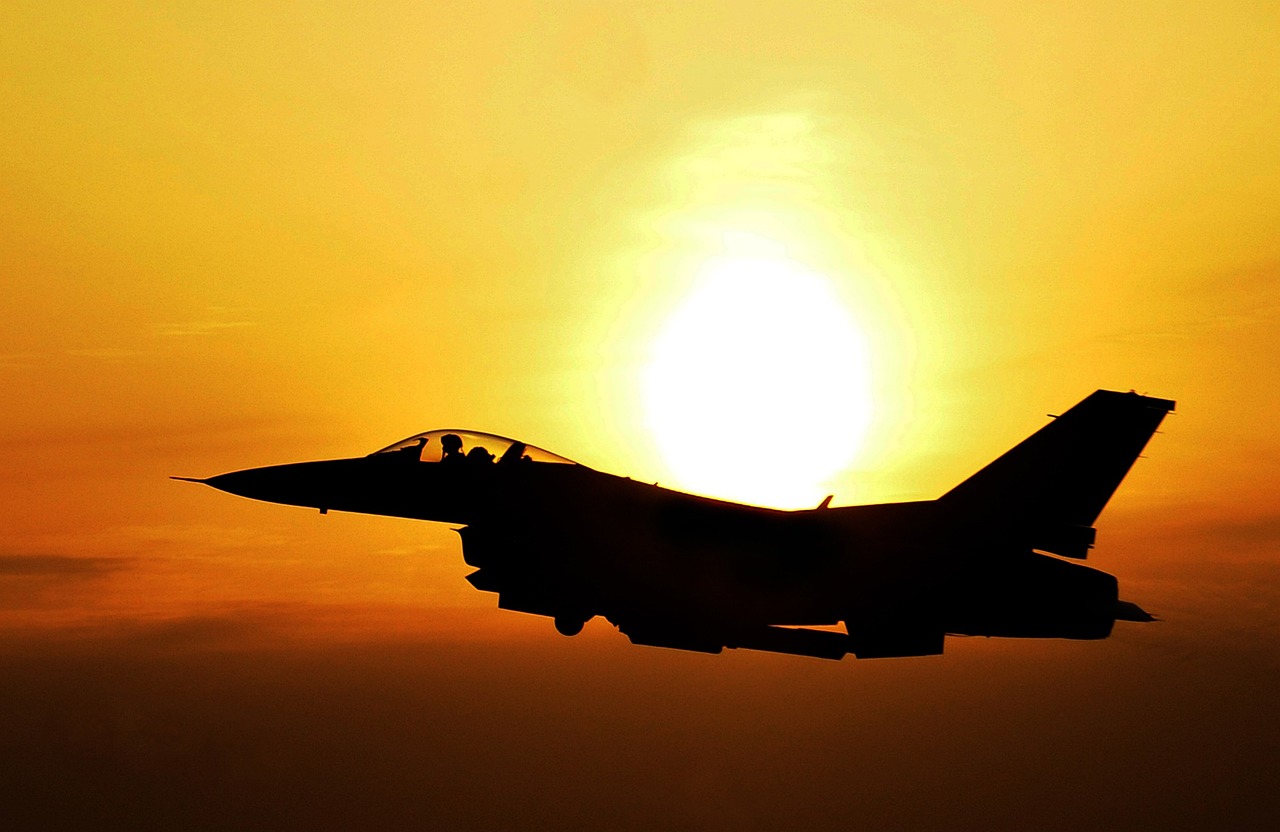
Miniaturization of Satellites
The is a game-changer in the realm of military communications. Imagine a world where the size of a satellite no longer dictates its capabilities; instead, smaller satellites can perform tasks that were once reserved for their larger counterparts. This trend toward compact, efficient design not only reduces costs but also enhances operational flexibility. With the advent of advanced materials and cutting-edge technology, military forces can deploy a fleet of small satellites, creating a robust network that can communicate and relay data in real-time.
One of the most significant advantages of miniaturized satellites is their rapid deployment. Traditional satellite systems often take years, if not decades, to build, launch, and operationalize. In contrast, smaller satellites can be developed and launched in a fraction of the time. This agility is crucial in military operations where the landscape can change overnight. For instance, if a sudden conflict arises, having a small satellite ready to deploy can provide the intelligence needed to make informed decisions swiftly.
Furthermore, the cost-effectiveness of miniaturized satellites cannot be overstated. The expenses associated with launching large satellites are significant, encompassing everything from manufacturing to the launch vehicle itself. By using smaller satellites, military organizations can allocate their budgets more efficiently, potentially investing in other critical areas such as cybersecurity or personnel training. In fact, the cost savings can be staggering:
| Satellite Type | Estimated Cost | Deployment Time |
|---|---|---|
| Large Satellite | $500 million | 5-10 years |
| Small Satellite | $10 million | 1-2 years |
With smaller satellites, military forces can also achieve greater redundancy in their communication networks. Instead of relying on a single large satellite, a constellation of smaller satellites can provide overlapping coverage. This means if one satellite fails, others can seamlessly take over its duties, ensuring that communication lines remain open even in the face of adversity. In essence, the miniaturization of satellites enhances the resilience of military operations, allowing forces to maintain their edge in various scenarios.
Additionally, the technological advancements in miniaturization have led to improved performance. Modern small satellites are equipped with sophisticated sensors and communication technologies that can rival those of larger satellites. This means they can gather and transmit data more efficiently, providing military planners with the real-time information they need to make critical decisions. The integration of technologies like machine learning and AI into these small systems further boosts their capabilities, enabling them to process vast amounts of data quickly and accurately.
In conclusion, the trend of miniaturizing satellites is reshaping the military landscape. By leveraging the benefits of smaller, more efficient satellites, military forces can enhance their operational capabilities, reduce costs, and maintain a strategic advantage in an increasingly complex world. As we look to the future, it’s clear that miniaturization will play a pivotal role in the evolution of military satellite communication.
- What are the main benefits of miniaturized satellites in military communication? Miniaturized satellites offer rapid deployment, cost-effectiveness, greater redundancy, and advanced technological capabilities.
- How do smaller satellites enhance operational flexibility? Smaller satellites can be launched quickly and in larger numbers, allowing military forces to adapt to changing situations and maintain communication capabilities.
- What is the cost difference between large and small satellites? Large satellites can cost around $500 million and take 5-10 years to deploy, while small satellites may cost about $10 million and take only 1-2 years.

Artificial Intelligence Integration
In the rapidly evolving landscape of military communications, the integration of artificial intelligence (AI) stands out as a game-changer. Imagine a world where military operations are not just reactive but predictive, where systems can analyze vast amounts of data in real-time, and where decision-making is enhanced by the power of AI. This isn't just a futuristic vision; it's becoming a reality, and it's transforming how military satellite communication functions.
AI's ability to process and analyze data far exceeds human capabilities, which is crucial in military settings where every second counts. For instance, AI can sift through satellite imagery, identifying potential threats or changes in terrain faster than any human analyst could. This capability allows military personnel to respond to situations with greater speed and accuracy. Furthermore, AI can enhance communication systems by optimizing data transmission paths, ensuring that critical information reaches the right people at the right time.
One of the most significant advantages of AI integration is its ability to learn and adapt. As AI systems gather more data, they can improve their algorithms, becoming more efficient and effective over time. This means that military satellite communication systems can evolve alongside emerging threats and challenges, ensuring that they remain relevant and capable. For example, AI can help predict potential communication blackouts by analyzing satellite positions and environmental factors, allowing military planners to develop contingency strategies.
Moreover, the integration of AI can greatly enhance situational awareness. By utilizing machine learning algorithms, AI can analyze patterns in data that may go unnoticed by human operators. This capability enables military forces to gain insights into enemy movements and intentions, facilitating better strategic planning. Imagine a battlefield where AI systems are continuously monitoring and analyzing data streams from multiple satellites, providing commanders with a comprehensive view of the operational landscape.
However, the integration of AI into military satellite communication is not without its challenges. There are concerns regarding cybersecurity, as AI systems could be vulnerable to hacking or manipulation. Additionally, ethical considerations arise, particularly around the use of AI in decision-making processes that could impact human lives. As military forces move towards adopting AI technologies, they must also prioritize robust security measures and establish ethical guidelines to govern AI usage.
In conclusion, the integration of artificial intelligence into military satellite communication systems is poised to revolutionize how military operations are conducted. By enhancing data processing capabilities, improving situational awareness, and enabling predictive analytics, AI is set to become an indispensable tool in modern warfare. As we move forward, the military must navigate the challenges of cybersecurity and ethics while fully embracing the potential that AI offers.
- How does AI improve military satellite communication?
AI enhances data processing, increases situational awareness, and optimizes decision-making processes, allowing for faster and more accurate responses in military operations. - Are there security risks associated with AI in military communications?
Yes, AI systems can be vulnerable to cyber attacks, and there are concerns regarding the ethical implications of AI-driven decision-making. - What role does machine learning play in AI integration?
Machine learning allows AI systems to learn from data and improve their algorithms over time, enhancing their effectiveness in military applications.
Frequently Asked Questions
- What are the key advancements in military satellite communication?
Recent advancements include enhanced bandwidth, faster data transmission speeds, and improved reliability. These innovations are critical for modern warfare, allowing for real-time communication and coordination among military units.
- What challenges does the military face in implementing satellite communication systems?
Challenges include budget constraints, technological limitations, and geopolitical factors. Funding often competes with other defense priorities, and current technologies may not fully meet the evolving demands of military operations.
- How does budget impact military satellite communication projects?
Budget constraints can slow down the development and deployment of satellite systems. Military planners must conduct a cost-benefit analysis to justify investments in new technologies, ensuring that funding is allocated effectively.
- What are the potential funding sources for military satellite communication?
Funding sources can include government grants, private partnerships, and international collaborations. Understanding these options is crucial for overcoming budgetary limitations and ensuring the success of satellite communication projects.
- How do geopolitical factors influence military satellite communication?
Geopolitical tensions can affect partnerships, technology sharing, and operational capabilities. Countries may need to collaborate with allies to enhance their satellite communication capabilities and ensure interoperability.
- What role does cybersecurity play in military satellite communication?
Cybersecurity is vital due to the increasing threat of cyber attacks on satellite systems. Robust security measures are necessary to protect sensitive military communications and maintain operational integrity.
- What future trends are expected in military satellite communication?
Emerging trends include the miniaturization of satellites and the integration of artificial intelligence. These advancements promise to improve deployment speed, enhance capabilities, and optimize data processing for real-time decision-making.
- How does miniaturization benefit military satellite operations?
Smaller, more efficient satellites allow for quicker deployment and greater flexibility in military operations. This trend supports the need for rapid response in dynamic combat situations.
- What advantages does artificial intelligence bring to satellite communication?
AI can optimize data processing and enhance decision-making in real-time military scenarios. This integration can lead to more effective communication and coordination among military forces during operations.









